Interrail in Montenegro: the ultimate country guide 🇲🇪
- Turquoise Adriatic Sea
- Excellent food, wine & olive oil
- Mediterranean climate
- Ancient history & diverse culture
- Active destination
Turquoise Adriatic Sea
Excellent food, wine & olive oil
Mediterranean climate
Ancient history & diverse culture
Active destination
Table of contents 🇲🇪
Montenegro overview
- Population: 617 thousand
- Capital: Podgorica
- Language: Montenegrin
- Currency: Euro
- Dialling code: +382
Nestled on the Adriatic Sea, Montenegro is a hidden gem of the Balkans, offering a rich tapestry of natural beauty, history, and culture. This small yet enchanting country, whose name translates to “Black Mountain,” is increasingly becoming a must-visit destination for travelers seeking a mix of serene landscapes, ancient architecture, and vibrant coastal towns.
Montenegro’s stunning coastline is a primary draw for visitors. The Bay of Kotor, a UNESCO World Heritage site, is often likened to a fjord due to its dramatic cliffs and winding bays. The medieval town of Kotor, with its well-preserved city walls, narrow cobblestone streets, and charming squares, invites exploration. The bay itself is a haven for sailing enthusiasts, offering crystal-clear waters and picturesque vistas at every turn. Nearby, the glamorous town of Budva boasts sandy beaches, a lively nightlife, and a historic old town that dates back over 2,500 years.
Beyond the coast, Montenegro’s interior offers equally captivating experiences. The rugged Durmitor National Park, another UNESCO World Heritage site, is a paradise for outdoor enthusiasts. Here, visitors can hike through pine forests, explore deep canyons, and marvel at glacial lakes. The Tara River Canyon, the deepest in Europe, is perfect for rafting adventures, offering both adrenaline and breathtaking natural beauty.
Montenegro’s cultural heritage is as rich as its landscapes. The ancient town of Cetinje, the historical and cultural capital, is home to numerous museums, monasteries, and art galleries. The Ostrog Monastery, built into a vertical cliff face, is a pilgrimage site that attracts visitors of all faiths, drawn by its stunning architecture and spiritual significance.
The country’s cuisine is another highlight, reflecting a blend of Mediterranean and Balkan influences. Fresh seafood is abundant along the coast, while hearty meat dishes and locally produced cheeses and wines can be savored in the interior regions. Montenegrin hospitality is warm and genuine, making every meal an experience to remember.
Visiting Montenegro also offers a glimpse into its complex history and multicultural tapestry. From the Roman and Ottoman influences seen in its architecture to the remnants of the Venetian era in coastal towns, Montenegro is a crossroads of civilizations. This is reflected in its diverse cultural festivals, lively music scenes, and traditional crafts.
Whether you’re drawn by the allure of its sun-drenched beaches, the call of its rugged mountains, or the charm of its historic towns, Montenegro promises a travel experience that is both enriching and unforgettable. Its unspoiled beauty and cultural depth ensure that it remains a captivating destination, ready to welcome those eager to discover its many treasures.
The top 4 cities to visit in Montenegro
Kotor
Kotor, nestled in a secluded part of the Bay of Kotor, is one of Montenegro’s most captivating destinations. This ancient town, a UNESCO World Heritage site, is renowned for its stunning natural setting and well-preserved medieval architecture. The town’s unique position, surrounded by dramatic limestone cliffs and serene waters, offers breathtaking views and a sense of timeless beauty.
Walking through Kotor’s old town is like stepping back in time. Its narrow, winding streets and quaint squares are lined with stone buildings, historic churches, and charming cafes. Among the must-see landmarks are the Cathedral of Saint Tryphon, a Romanesque masterpiece dating back to the 12th century, and the Church of Saint Luke, which remarkably served both Catholic and Orthodox communities over the centuries. The Maritime Museum, housed in a former baroque palace, offers fascinating insights into the town’s rich seafaring history.
For those with a taste for adventure, the hike up to the San Giovanni Fortress is a rewarding challenge. The climb involves ascending over 1,300 steps, but the panoramic views from the top, encompassing the bay and surrounding mountains, are well worth the effort. The fortress itself, with its ancient walls and battlements, provides a tangible connection to Kotor’s storied past.
Kotor is also a vibrant cultural hub, hosting numerous festivals and events throughout the year. The Kotor Carnival and the Kotor Art Festival are particularly popular, drawing visitors with their lively celebrations and showcasing the town’s artistic spirit.
In essence, Kotor is a perfect blend of natural beauty, historical depth, and cultural vibrancy, making it a must-visit for anyone exploring Montenegro. Its enchanting atmosphere and rich heritage ensure that it leaves a lasting impression on all who visit.


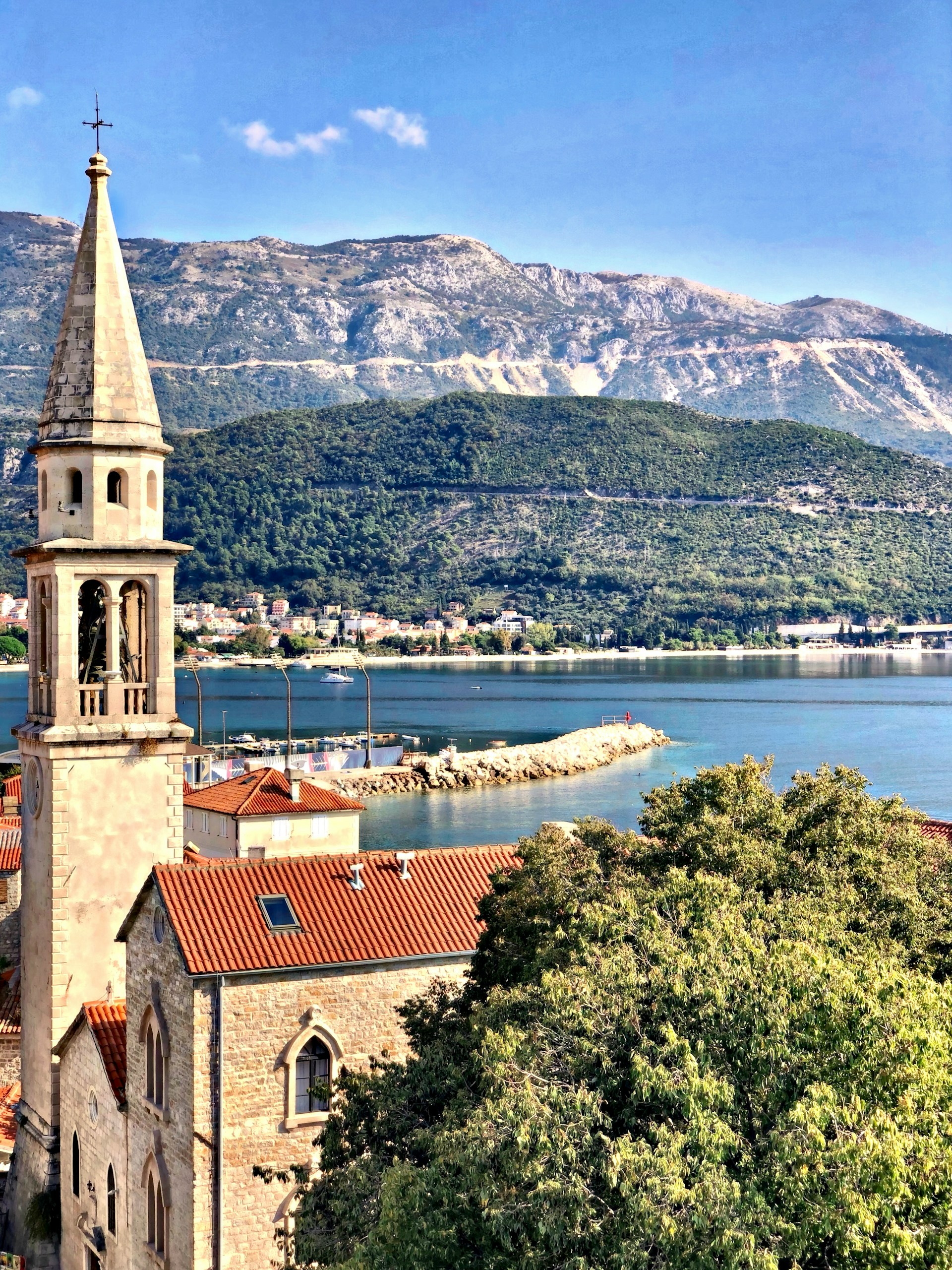
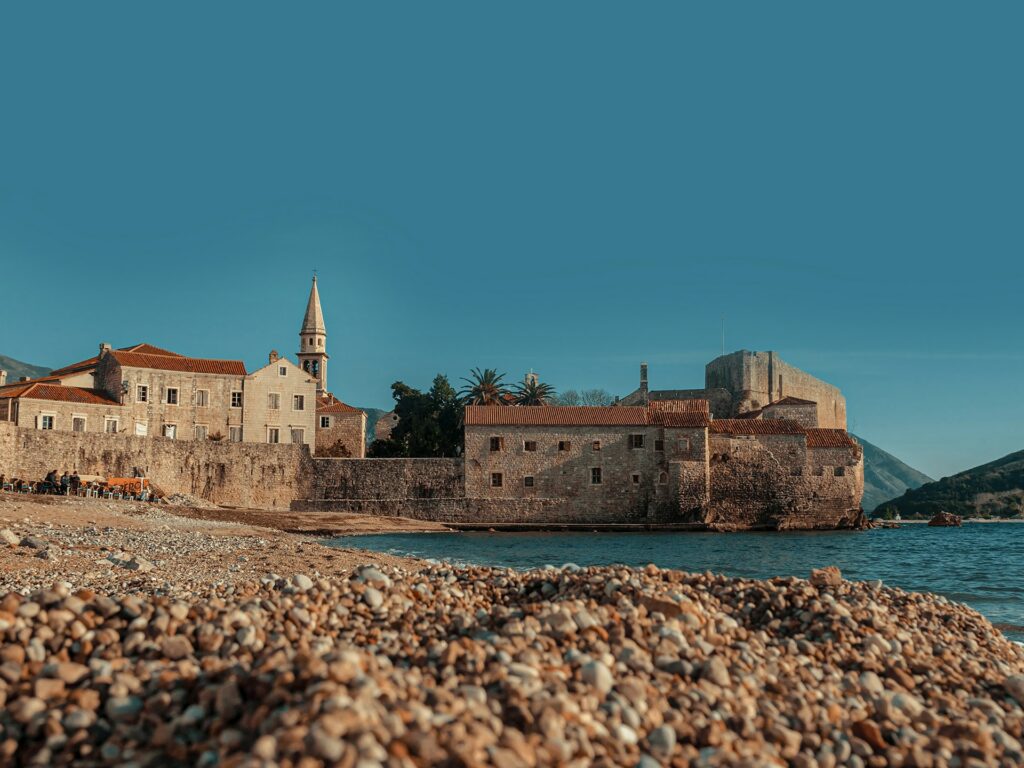
Budva
Budva, often referred to as the “Montenegrin Miami,” is a vibrant coastal town that seamlessly blends history, culture, and modern attractions. Budva is renowned for its picturesque beaches, lively nightlife, and well-preserved medieval old town, making it a prime destination for travellers seeking both relaxation and adventure.
The heart of Budva is its stunning old town, a labyrinth of narrow streets, ancient stone houses, and charming squares. Encircled by medieval walls, the old town features several historical landmarks, including the Church of Saint John, the Church of the Holy Trinity, and the Citadel, which offers panoramic views of the Adriatic and the surrounding area. Wandering through the old town, visitors can explore its many boutiques, galleries, and cafes, each exuding a unique blend of traditional and contemporary influences.
Budva’s coastline is dotted with beautiful beaches, each offering a distinct ambiance. Mogren Beach, sheltered by cliffs and accessible through a scenic path, is known for its clear waters and serene atmosphere. Slovenska Beach, the longest in Budva, is bustling with activity, offering numerous water sports, beach bars, and restaurants. For a more secluded experience, Jaz Beach, located just outside the town, provides a tranquil escape with its crystal-clear waters and expansive sands.
Budva is also famous for its vibrant nightlife, attracting visitors from all over with its beach clubs, bars, and nightclubs. The town comes alive after dark, with numerous venues offering live music, DJ performances, and lively parties that continue into the early hours.
Cultural events and festivals are a staple of Budva’s social calendar. The Budva Theatre City Festival, held in the summer, transforms the old town into an open-air stage, featuring a variety of performances, from theatre and dance to music and art.
Bar
Venturing south, Bar is another coastal town. It’s captivating destination that offers a blend of historical significance, natural beauty, and modern appeal. Known for its strategic port, Bar is a gateway to the Adriatic and serves as a vibrant link between Montenegro and the rest of the Mediterranean.
One of Bar’s most significant attractions is the ancient town of Stari Bar, located inland from the modern city. Nestled at the foot of Mount Rumija, Stari Bar is an archaeological treasure trove. Its well-preserved ruins include remnants of ancient churches, aqueducts, and defensive walls, showcasing the town’s rich history that spans Roman, Byzantine, and Ottoman periods. The highlight is the St. Jovan Vladimir Church, a symbol of the town’s enduring religious heritage.
The modern town of Bar is centred around its bustling port, which is the largest in Montenegro. This dynamic area is characterised by wide boulevards, modern architecture, and a lively waterfront promenade. The Bar Marina is a popular spot for both locals and visitors, offering beautiful sea views and a range of cafes and restaurants where one can enjoy fresh seafood and Mediterranean cuisine.
Bar’s coastline is adorned with beautiful beaches, each offering a unique charm. The long, sandy Veliki Pijesak Beach is ideal for sunbathing and swimming, while the more secluded Red Beach is known for its distinctive reddish pebbles and tranquil waters. These beaches are perfect for relaxation and provide stunning views of the Adriatic Sea.
Nature enthusiasts will appreciate the olive groves of Bar, which are among the oldest in the world. The Old Olive Tree of Mirovica, believed to be over 2,000 years old, is a symbol of the town and a testament to its ancient agricultural traditions. Visiting these groves offers a serene experience and a connection to Montenegro’s deep-rooted olive cultivation heritage.
Bar is also a cultural hub, hosting various events and festivals throughout the year. The Bar Chronicles, an annual cultural festival, features a diverse array of performances, including theatre, music, and literary events, reflecting the town’s vibrant cultural scene.
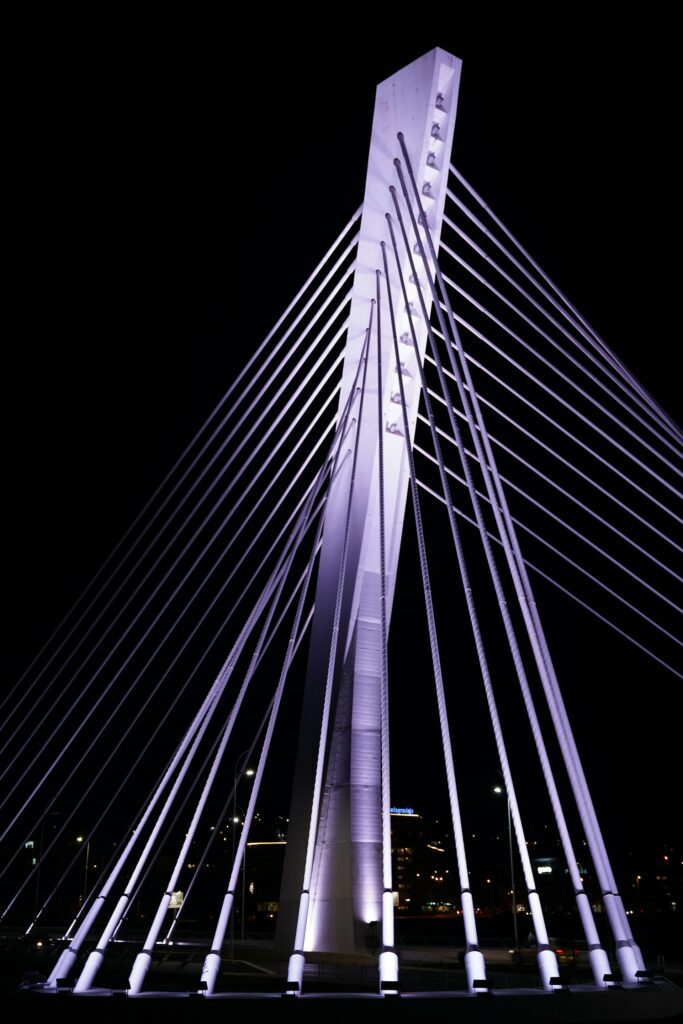
Podgorica
Visiting Podgorica, the capital city of Montenegro, offers a unique blend of history, culture, and modernity that is sure to captivate interrailers. Situated at the confluence of the Ribnica and Moraca rivers, Podgorica is a city of contrasts, where ancient heritage meets contemporary energy.
Exploring Podgorica begins with a stroll through its historic centre, where remnants of Ottoman and Austro-Hungarian influence are evident. The Ottoman Clock Tower, dating back to the 17th century, stands as a testament to the city’s past, while nearby mosques and old stone bridges add to the historical ambiance. The Millennium Bridge, a modern architectural marvel spanning the Moraca River, represents the city’s forward-looking spirit.
Cultural enthusiasts will find a wealth of museums and galleries in Podgorica. The National Museum of Montenegro showcases diverse exhibits ranging from archaeology to contemporary art, offering insights into the country’s rich cultural heritage. The King Nikola’s Palace, a former royal residence turned museum, provides a glimpse into Montenegro’s royal history and opulent lifestyle.
Podgorica’s natural surroundings also beckon exploration. The lush Moraca River Canyon, just a short drive from the city centre, offers hiking trails, scenic viewpoints, and opportunities for outdoor activities such as rafting and picnicking. Lake Skadar, the largest lake in the Balkans and a haven for birdwatchers, is a short drive away, offering serene boat tours amidst breathtaking landscapes.
The city’s vibrant cafe culture and lively nightlife add another dimension to the Podgorica experience. Trendy cafes, traditional kafanas, and chic bars line the streets, offering a taste of Montenegrin hospitality and culinary delights.
People who visit Montenegro also visit...
Croatia 🇭🇷
Bosnia and Herzegovina 🇧🇦
Which Interrail pass do I need to travel around Montenegro?
Interrail Global Pass
Do I need to make train seat reservations in Montenegro?
Just hop on regional trains, as they don’t require reservations in Montenegro. If you are doing the Bar to Belgrade route then your best option is to reserve a seat locally at a train station.
Where to stay in Montenegro
Montenegro Hostel 4U - Kotor
Montenegro Backpackers Home - Budva
Hostel Hangout - Bar
Q Podgorica
Read more about Montenegro on our blog
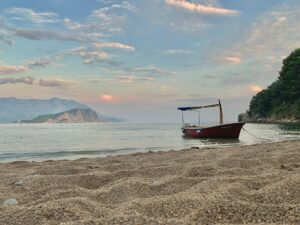
The Top 10 Off The Beaten Track Interrail Destinations To Go To In 2023
When you think of interrailing, you might initially think of going to the stereotypical travel destinations such as Rome, Paris or Berlin. But there are
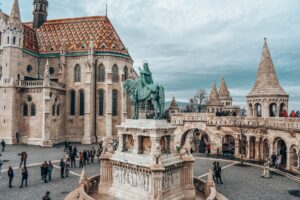
The Ultimate 3 Week Eastern Europe Interrail Route
Exploring Eastern Europe by train is an incredible way to immerse yourself in the rich history, diverse cultures, and stunning landscapes of the region. Using

How can I set a budget for Interrailing?
Diogo Lança of Road Delta shares his tips on how to budget and pack for an Interrail trip. When you start thinking about going Interrailing,